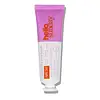What's inside
What's inside
 Key Ingredients
Key Ingredients

 Benefits
Benefits

No benefits
 Concerns
Concerns

 Ingredients Side-by-side
Ingredients Side-by-side

Water
Skin ConditioningGlycerin
HumectantOctocrylene
UV AbsorberEthylhexyl Salicylate
UV AbsorberButyl Methoxydibenzoylmethane
UV AbsorberCetearyl Alcohol
EmollientOleyl Erucate
EmollientCaprylyl Caprylate/Caprate
EmollientTapioca Starch
Panthenol
Skin ConditioningEthylhexyl Stearate
EmollientSucrose Polystearate
EmollientDimethicone
EmollientDisodium Cetearyl Sulfosuccinate
CleansingHydrogenated Vegetable Glycerides
EmollientHydroxyacetophenone
AntioxidantPentaerythrityl Distearate
EmulsifyingSodium Polyacrylate
AbsorbentPhenoxyethanol
PreservativeAllantoin
Skin ConditioningParfum
MaskingTocopheryl Acetate
AntioxidantHydrogenated Polyisobutene
EmollientDisodium EDTA
Xanthan Gum
EmulsifyingSodium Hyaluronate
HumectantAloe Barbadensis Leaf Juice Powder
Skin ConditioningTocopherol
AntioxidantLinalool
PerfumingBenzyl Salicylate
PerfumingPantolactone
HumectantGeraniol
PerfumingCitronellol
PerfumingLimonene
PerfumingWater, Glycerin, Octocrylene, Ethylhexyl Salicylate, Butyl Methoxydibenzoylmethane, Cetearyl Alcohol, Oleyl Erucate, Caprylyl Caprylate/Caprate, Tapioca Starch, Panthenol, Ethylhexyl Stearate, Sucrose Polystearate, Dimethicone, Disodium Cetearyl Sulfosuccinate, Hydrogenated Vegetable Glycerides, Hydroxyacetophenone, Pentaerythrityl Distearate, Sodium Polyacrylate, Phenoxyethanol, Allantoin, Parfum, Tocopheryl Acetate, Hydrogenated Polyisobutene, Disodium EDTA, Xanthan Gum, Sodium Hyaluronate, Aloe Barbadensis Leaf Juice Powder, Tocopherol, Linalool, Benzyl Salicylate, Pantolactone, Geraniol, Citronellol, Limonene
 Reviews
Reviews

Ingredients Explained
These ingredients are found in both products.
Ingredients higher up in an ingredient list are typically present in a larger amount.
Also known as Avobenzone, this ingredient is a chemical sunscreen filter that provides protection in the UV-A range.
Avobenzone is globally approved and is the most commonly used UV-A filter in the world.
Studies have found that avobenzone becomes ineffective when exposed to UV light (it is not photostable; meaning that it breaks down in sunlight). Because of this, formulations that include avobenzone will usually contain stabilizers such as octocrylene.
However, some modern formulations (looking at you, EU!) are able to stabilize avobenzone by coating the molecules.
Avobenzone does not protect against the UV-B range, so it's important to check that the sunscreen you're using contains other UV filters that do!
The highest concentration of avobenzone permitted is 3% in the US, and 5% in the EU.
Learn more about Butyl Methoxydibenzoylmethane